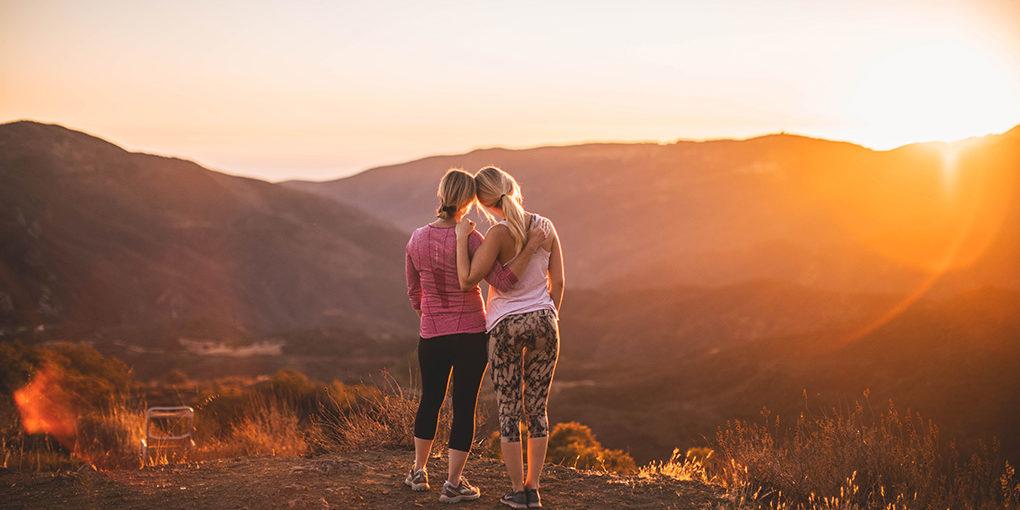If you want to keep it, you have to give it away. By definition, that’s a contradiction. But in the recovery world, it’s fundamental. So, what does it mean?
According to Jennifer Harrington, therapist at the Process Recovery Center, a New Hampshire drug rehab, it’s all about making connections. “It’s about the relationship, the connection between two people,” she says. When we extend a hand to someone in need, we momentarily step out of our heads so that we can focus on the needs of someone else. We are “giving away” what was so freely shared with us by others in recovery: those selfless gifts of an attentive ear, a strong shoulder, or a dog-eared copy of the Big Book.
“We can identify with that person we are helping, and with humanity overall,” Harrington says. “That just feels good.”
This behavior is contrary to that of someone in active addiction. “When we talk about addiction as a whole, it’s very isolating,” Harrington says. “It removes us from people, and makes us feel alone and isolated. That feeds our unworthiness, and we don’t know how to interact. We don’t know what our place in the world is.” This is counter to our most basic human needs, and damaging to our psyches.
Humans are social animals, as Aristotle declared more than two thousand years ago. Whether we are struggling with an alcohol addiction, or seeking the courage to end a toxic relationship, we need help. We need to know that we are not alone. When we help others, we see the power of human connection, and it reminds us that we indeed have a positive influence. As Kimi Dettore of Revive Recovery in Nashua puts it, “Connectivity is what develops the human spirit.”
She adds, ”I think that no matter what pathway (to recovery) is pursued, every part of those paths involves you receiving help, and you being able to provide help for others. Be it actively or passively. I consider it simple. If someone’s going to be nice to me, and I’m learning how to be nice to myself, then I can learn how to be nice to someone else. It’s a really simple chain reaction.”
When Marcy Tate, intern at Revive Recovery, an addiction treatment center in New Hampshire, is able to help someone, her own recovery is fortified. “I think it’s humbling. It’s a constant reminder of how dangerous (our thinking) is. Because I forget how dangerous it is for me to think alone. So anytime I’m opening myself up to new things, new people, or helping people, I am being reminded of A, the good things that are happening in my life, and B, the destruction that could happen – prison, things like that.”
And here’s the key that unlocks that first door to this karmic phenomenon: “You have to be willing to ask for help before you can give it,” Harrington says. “You have to be vulnerable, and that can be scary.” But soon you will find you are able to listen to an overwhelmed roommate who just moved in to your sober house. You’ll offer a few words of advice that helped you early on, and you will see you’ve made a difference. You will feel better yourself. It’s actually proven science.
Results of a 2016 study, “The Neurobiology of Giving Versus Receiving Support: The Role of Stress-Related and Social Reward-Related Neural Activity,” published in Psychosomatic Medicine: Journal of Biobehavioral Medicine, shows that while both giving and receiving help reduce stress activity and increase reward activity in the brain, according to MRI scans, the boost in reward activity for those giving help is actually higher.
But how do we start when we are afraid? Revealing our vulnerability is counter to our survivalist nature as a species. It can feel unnatural, especially in early recovery. We can take that first step by leaving our comfort zones. Harrington suggests doing one thing every day that makes you uncomfortable. If being around large groups of people is stressful, go to the mall for just five minutes. Baby steps. You don’t have to attend that large family gathering, the thought of which may be eating away at your stomach lining.
You can also try meditation. It will train you to release your grip on disabling emotions such as anger and fear, enabling you to receive suggestions, and put them into action. You can find many guided meditation videos on YouTube that last anywhere from a few minutes to an hour or more. You don’t need to take on enormous tasks to grow.
For those at an addiction treatment center in New Hampshire, Harrington reminds us, “Every time we teach ourselves something, our brains rewire. So, you’re not just putting your hands on a hot stove over and over.” In other words, we learn a new and healthy behavior; it feels good. We get a dopamine boost, and our brain tells us to do it again. We do not have to repeat self-destructive actions. We can use our new-found confidence to help boost others’.
Joe Bulwin, volunteer at Revive, says, “Even just opening the door for somebody, or helping somebody across the street. I’m sure most people do feel better when they help somebody. They can walk away with a smile on their face and say, ‘you know, I helped that person.’
“And if somebody’s an isolator or a barfly, or hanging out with the wrong people, whatever the case may be. Helping positively might take them away from that.”
We all need somebody – a mentor, a sponsor, someone to guide us. Recovery is about interaction. Giving and receiving. As writer Johann Hari said in his Ted Talk, “The opposite of addiction is not sobriety. The opposite of addiction is connection.”
If you are interested in discussing this further, contact our New Hampshire drug rehab today!
Carol Anderson/Contributor



